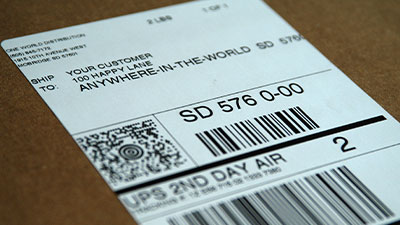Providing exceptional customer service is a cornerstone of success in the ecommerce industry. With fierce competition and high customer expectations, it’s vital to implement best practices that enhance the customer experience, boost loyalty, and drive business growth. In this article, we’ll explore key strategies to elevate your ecommerce customer service, ensuring that you keep customers happy and coming back.
Tailoring the customer service experience to individual needs and preferences is crucial. You understand that each customer is unique, with specific desires and expectations. By leveraging data and insights, you can create a personalized approach that not only meets but exceeds these expectations.
8%
increase in conversion rates when you include personalized consumer experiences
For instance, One World Direct’s call center services feature American agents who are meticulously trained to meet our client’s specific needs. This includes personalized call scripting, tailored upselling strategies, and customizable email templates. By working with a 3PL company that is integrated with your call center, the customer experience is elevated as agents have access to the data needed to deliver superior support and resolve issues promptly.
Prioritizing a personalized approach in your ecommerce customer service strategy not only differentiates you from competitors but also aligns with the growing consumer expectation for individualized treatment.
To further enhance your ecommerce customer experience, check out our guide on ways to improve customer service for ecommerce and our guide on ecommerce return solutions to keep your shoppers happy.
Fast and efficient customer support is incredibly important for online businesses. It has a direct impact on how customers perceive your brand and can significantly influence their decision to make a purchase or continue being a loyal customer.
Hubspot research found that 93% of customers are likely to shop again with a brand following a positive customer service experience. Make sure that you have systems in place to promptly respond to customer queries so you can keep them as repeat visitors.
When customers have an issue or question, they expect a quick response. If they don’t receive timely assistance, it can lead to frustration and dissatisfaction. This negative experience may prompt them to seek out alternative options from your competitors who can provide better and faster support.
60%
of customers say that long wait times are the most annoying parts of customer support interactions
Hubspot found that 64% of respondents from a study say they’ll switch brands over a single bad experience with a company’s customer service. Help Scout also found that 60% of customers say that long wait times are the most annoying parts of customer support interactions. Responding quickly to your customers makes all the difference between a positive and negative customer service experience.
On the other hand, when you’re able to respond promptly to customer inquiries, it has several positive outcomes:
Implementing a self-service support portal is essential in modern ecommerce customer service. These portals empower your customers by giving them immediate access to information and solutions, reducing frustration and wait times.
A well-maintained knowledge base significantly reduces the volume of customer inquiries. By providing detailed articles, FAQs, and how-to guides, you address common issues without relying on dedicated agents.
Example: Integrating knowledge bases can be particularly beneficial to explain policies and procedures for offerings like fulfillment services, where customers often have recurring logistical questions. An efficient self-service portal with comprehensive guides can preemptively address these inquiries.
For businesses aiming to refine their ecommerce customer service, leveraging self-service support portals and knowledge bases is non-negotiable. It not only enhances the customer experience but also optimizes internal resources.
Transparent knowledge bases are also essential to explain the conditions of policies such as on-time delivery guarantees or ecommerce personalization best practices. The more information you can give your customers, the more clarity and confidence they have to purchase your goods.
Proactive communication involves anticipating your customers’ needs even before they reach out to you. This not only saves time but also builds trust and loyalty by keeping your customers informed about various aspects such as order status, delays, or product updates. By doing so, you reduce anxiety and enhance their overall experience.
However, taking things one step further with personalization can truly set your ecommerce business apart. Going beyond simple proactive communication, personalization involves tailoring interactions to individual preferences and purchase history. This level of customization makes customers feel valued. For example, using data to recommend products based on past purchases or offering personalized discounts can significantly improve customer satisfaction.
To successfully implement these strategies, consider the following key practices:
In order to improve your ecommerce customer service, it is essential to leverage the power of customer reviews and feedback. These valuable resources provide direct insights into your customers’ experiences, allowing you to identify common issues and areas for improvement. By promptly addressing these concerns, you can significantly enhance the overall customer journey.
One effective way to gather insights is by using customer reviews. They offer a wealth of information that can help you understand your customers’ needs better. Additionally, feedback obtained through this method aids in fine-tuning your service offerings.
To make the most of customer reviews, it is crucial to have an organized approach in place. This ensures timely responses and actionable insights, making organization a foundational best practice. Moreover, providing quick responses to both positive and negative reviews demonstrates your commitment to customer satisfaction.
Engaging with customers on platforms they frequent is another important aspect to consider. Adopting a multichannel customer service strategy allows you to connect with customers through various channels such as social media, email, and live chat. This enables you to address their concerns wherever they are most comfortable.
Regardless of the channel used, it is vital to maintain consistent quality across all platforms. Whether it’s through email or live chat, ensuring that your service quality remains high is crucial for fostering positive customer experiences.
While leveraging customer reviews and feedback is important, there are other strategies that can further enhance the overall customer experience. One such strategy is custom packaging for ecommerce. The use of personalized packaging solutions not only improves the physical presentation of products but also adds an extra layer of personalization that customers appreciate.
Another essential strategy is to leverage personalized-to-consumer (P2C) fulfillment services. By integrating the free plugin with your ecommerce storefront, shoppers can personalize products with custom engravings and embroidery. They can also include personal greeting cards for the ultimate unboxing experience.
To maintain a high standard of customer service, it’s crucial to measure and optimize various metrics. These key performance indicators (KPIs) help you understand the effectiveness of your customer service department and identify areas for improvement.
Response time is a vital metric in ecommerce customer service. Customers expect quick solutions to their problems, and a delayed response can lead to frustration and dissatisfaction. By monitoring response times, you can ensure that your team provides timely support. Aim for:
Using tools like automated ticketing systems can help streamline this process, ensuring no query goes unanswered.
Customer attention and satisfaction are paramount. Happy customers are more likely to become repeat buyers and brand advocates. Key metrics include:
Collecting data through surveys, feedback forms, and direct interactions offers valuable insights into these metrics, enabling proactive improvements.
By regularly monitoring these KPIs, you can make data-driven decisions that enhance your ecommerce customer service experience. This not only boosts customer retention but also strengthens your brand’s reputation in the competitive online marketplace.
Effective optimization strategies rely on analyzing data and continuously seeking feedback. By using a strong data-driven approach, your customer service team can track important metrics like response time and customer satisfaction. This allows you to spot patterns and areas that need improvement.
By making these strategies a priority, you’ll be able to provide excellent customer support and ensure the success of your ecommerce business in the long run.
Automating customer service processes significantly boosts efficiency by minimizing manual intervention. Software management systems streamline repetitive tasks, allowing your team to focus on more complex customer interactions. Automated responses can handle common queries, freeing up resources for urgent issues. This scalability is crucial as your business grows, ensuring you can maintain high service levels without scaling costs proportionally.
Implementing customer service automation reduces operational costs substantially. Automation cut down the need for extensive human resources, diminishing labor expenses while maintaining quality support. These savings can be reallocated to other strategic areas such as marketing or product development, enhancing your competitive advantage in the online retail marketplace.
Choosing the right customer service automation tools is crucial. Make sure your automation and software management systems match your business requirements. Evaluate tools based on:
Using automation improves efficiency by offering personalized auto-responses for 24/7 service. By seamlessly integrating these tools, you can streamline your operations and use automation to enhance response times and customer satisfaction.
It’s also important to gather feedback regularly and make adjustments to these systems. This way, you can fully utilize the benefits of providing excellent customer service in the online retail industry.
Implementing these best practices in your ecommerce customer service strategy can significantly enhance your overall customer experience, drive loyalty, and boost your business growth. At One World Direct, we specialize in providing top-notch fulfillment services coupled with customer support tailored to your needs. Learn more about how OWD can help you streamline your logistics and improve your customer service. Schedule a call to discuss call center solutions to cover all your customer support needs.

Fulfillment costs are based on three criteria: size, weight and delivery time.
OWD offers five service levels: economy (7-10 days); Standard (5-7 days), 2-Day, Overnight and International.

Example Weight: 1 ounce
Fulfillment | Postage | Total |
|---|---|---|
$1.75 | $3.64 | $5.39 |
Lorem ipsum dolor sit amet, consectetur adipiscing elit. Ut elit tellus, luctus nec ullamcorper mattis, pulvinar dapibus leo.
Lorem ipsum dolor sit amet, consectetur adipiscing elit. Ut elit tellus, luctus nec ullamcorper mattis, pulvinar dapibus leo.
Lorem ipsum dolor sit amet, consectetur adipiscing elit. Ut elit tellus, luctus nec ullamcorper mattis, pulvinar dapibus leo.
Lorem ipsum dolor sit amet, consectetur adipiscing elit. Ut elit tellus, luctus nec ullamcorper mattis, pulvinar dapibus leo.
Lorem ipsum dolor sit amet, consectetur adipiscing elit. Ut elit tellus, luctus nec ullamcorper mattis, pulvinar dapibus leo.
DDU means Delivery Duty Unpaid – where the buyer pays for all of the import fees at delivery.
Unexpected import fees give buyers sticker shock – not good. When they refuse to pay, you’ve lost a sale and must pay to return your product, or abandon it.
DDU is an old idea whose time has passed. For these reasons and more, OWD doesn’t recommend DDU for e-com sellers.
DDP is an acronym for Delivery Duty Paid. DDP means that the seller pays for all the duties and import fees.
With DDP, your customers won’t be surprised with unexpected customs charges – good!
With OWD’s landed cost calculator, your foreign customers will know exactly what their various VAT, customers and duties will cost. No unhappy surprises.
For large-scale operations needing a full solution in Europe, there’s OWD Europe, based in Amsterdam.

OWD handles phone calls, e-mails and web chat eighteen hours a day from our own state-of-the-art facility.
We’ll handle your inbound sales and customer service contacts.
You get career agents who speak American English and know how to sell.
$99 gets you 200 calls, e-mails or chats handled every week.
You get your own phone number and custom e-mail.
We do a lot more. Call for details.

The Voice of Your Brand
OWD’s all-inclusive Returns service provides simplicity and high-end customer service. OWD includes a pre-printed return label as part of your packing slip. Your customer need only drop it in the mail.
What’s included: packaging slip with return label, QC inspection, re-bag, re-tag and return to stock. What’s excluded: postage cost, poly bags and any special packaging.
